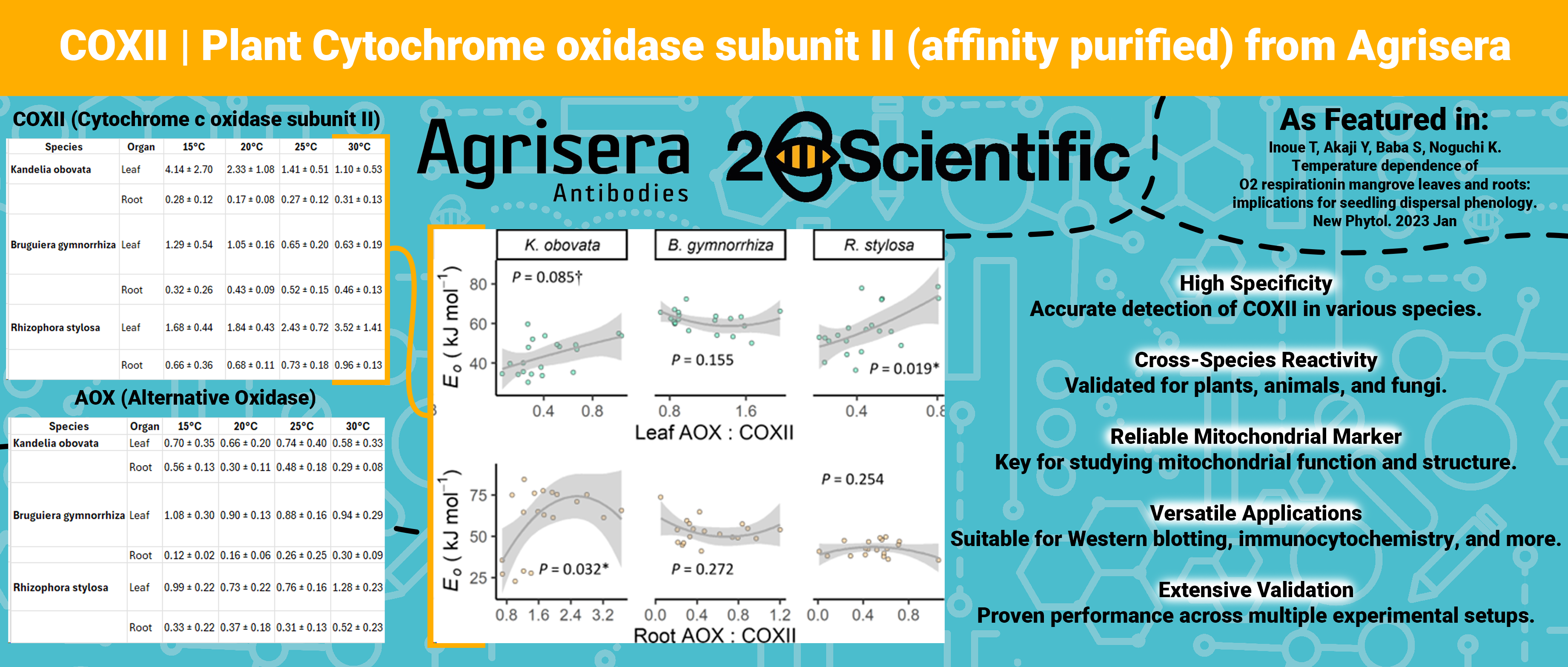COXII - Plant Cytochrome oxidase subunit II (affinity purified) - Agrisera Publication
Importance of Agrisera Products
The benefits of using Agrisera products include reliable quantification of specific mitochondrial proteins, ensuring accurate comparisons across different conditions. The antibodies provided consistent results, allowing researchers to detect changes in protein levels, such as the observed variation in COXII in response to growth temperature across species. This reliability is crucial for studies investigating the relationship between protein expression and environmental factors.

After a 56-day experiment, leaf and root samples were collected and stored at −80°C for protein analysis. The samples were prepared using a specialised buffer and ground while cooled with liquid nitrogen. Following heating and centrifugation, protein content was measured using the modified Lowry method. Mitochondrial proteins, including COXII and AOX, were quantified using a protein autoanalyser with Agrisera antibodies. https://doi.org/10.1111/nph.18513
Objective
This study aims to assess how temperature sensitivity influences respiration among three mangrove species—Kandelia obovata, Bruguiera gymnorrhiza, and Rhizophora stylosa—by measuring oxygen (O2) consumption rates. Additionally, it investigates how the levels of key respiratory enzymes, cytochrome c oxidase subunit II (COXII) and alternative oxidase (AOX), fluctuate with changes in growth temperature. These enzymes are crucial to mitochondrial respiration and ATP production. The goal was to establish a connection between temperature-dependent respiratory activities and the seasonal dispersal patterns of the seedlings.
Background
This research explores the intricate relationship between temperature and the respiratory processes of these three mangrove species, which inhabit tropical and subtropical regions. These species exhibit distinct seedling dispersal seasons, coinciding with varying environmental temperatures. Understanding how these dispersal timings are reflected in the species' physiological responses, particularly in oxygen respiration in leaves and roots, is critical, as this process supports energy production necessary for growth and maintenance.
Findings
The findings demonstrate the critical role of temperature in shaping the respiratory adaptations of mangrove species, particularly concerning their seedling dispersal phenology. Variations in respiratory enzyme levels and O2 consumption rates among the species suggest that their ability to produce energy efficiently at different temperatures is closely tied to their seasonal reproductive strategies.
Specifically:
Kandelia obovata is better adapted to colder conditions.
Rhizophora stylosa thrives in warmer environments.
Bruguiera gymnorrhiza displays a stable respiratory function, making it versatile across a broader temperature range.
Conclusion
This research enhances our understanding of how mangrove species might respond to climate change, particularly as global temperatures fluctuate. Such changes could potentially alter the timing and success of seedling establishment in these ecosystems, impacting the resilience and distribution of mangrove species in tropical and subtropical regions.